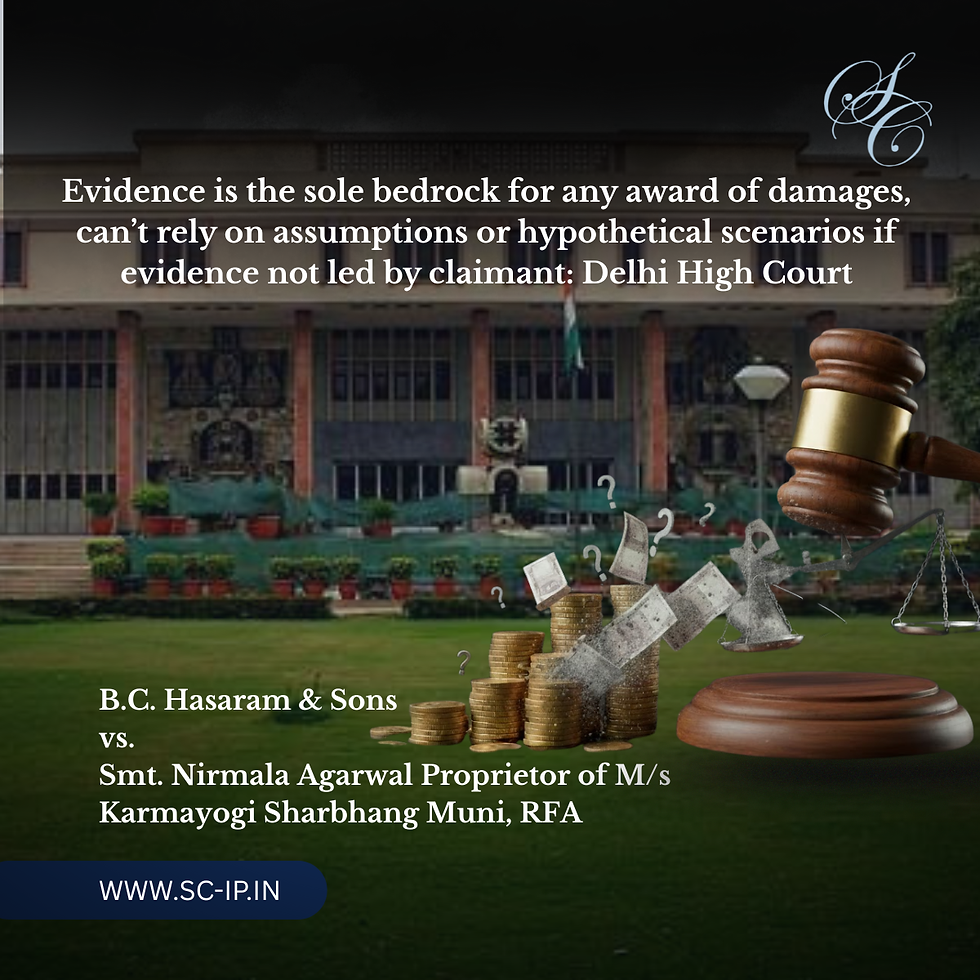Lummus Novolen Technology Gmbh vs The Assistant Controller Of Patents And Designs
- SC IP
- Jun 6, 2025
- 2 min read

In a recent decision, the Delhi High Court upheld the rejection of a patent application by the Indian Patent Office, reiterating the dual threshold for inventive step under the Indian Patents Act, i.e., not only must an invention demonstrate technical advancement, but it must also be non-obvious to a person skilled in the art (PSITA).
The patent application in question related to a process for producing a Ziegler-Natta catalyst (typically used in polymerization processes for making plastics like polypropylene, polyethylene, etc.) using a diether compound as the sole internal electron donor, resulting in phthalate-free polypropylene with a specified molecular weight distribution. The application was rejected by the Patent Office for lack of inventive step as the claimed features were deemed obvious in light of the combined teachings of three prior art documents (D1–D3).
On appeal, the applicant argued that the invention provided technical advancement as it offered improved yields, cost efficiency, and reduced impurities, of the resulting catalyst. It was also contended that the cited prior arts related to distinct systems, thereby failing to render the claimed invention obvious. The applicant also argued that the refusal suffered from hindsight bias and lacked proper reasoning.
The Court undertook a detailed analysis of the inventive step requirement and the applicable tests for assessing obviousness (including ‘obvious to try’, problem/solution, “could-would”, and the TSM tests). It held that inventive step demands both technical contribution and non-obviousness to a PSITA at the priority date.
Critically, the Court found that
D1 and D2 disclosed the same diether compounds and hot filtration steps claimed in the application, and yielded polypropylene with molecular weight distributions within the same range.
D3, filed by the same inventor, described a process nearly identical to the subject application, reinforcing the conclusion that the claimed invention was a predictable combination of known elements.
Given this overlap, the Court concluded that a PSITA, particularly since the subject application's inventor was also listed as the inventor in D3, would have arrived at the subject application by combining the teachings of D1 and D3. Thus, the subject application did not meet the inventive step requirement.
The appeal was accordingly dismissed, and the Controller’s refusal was affirmed.
Lummus Novolen Technology Gmbh vs The Assistant Controller Of Patents And Designs [C.A.(COMM.IPD-PAT) 12/2023, judgement dated May 29, 2025]




Comments